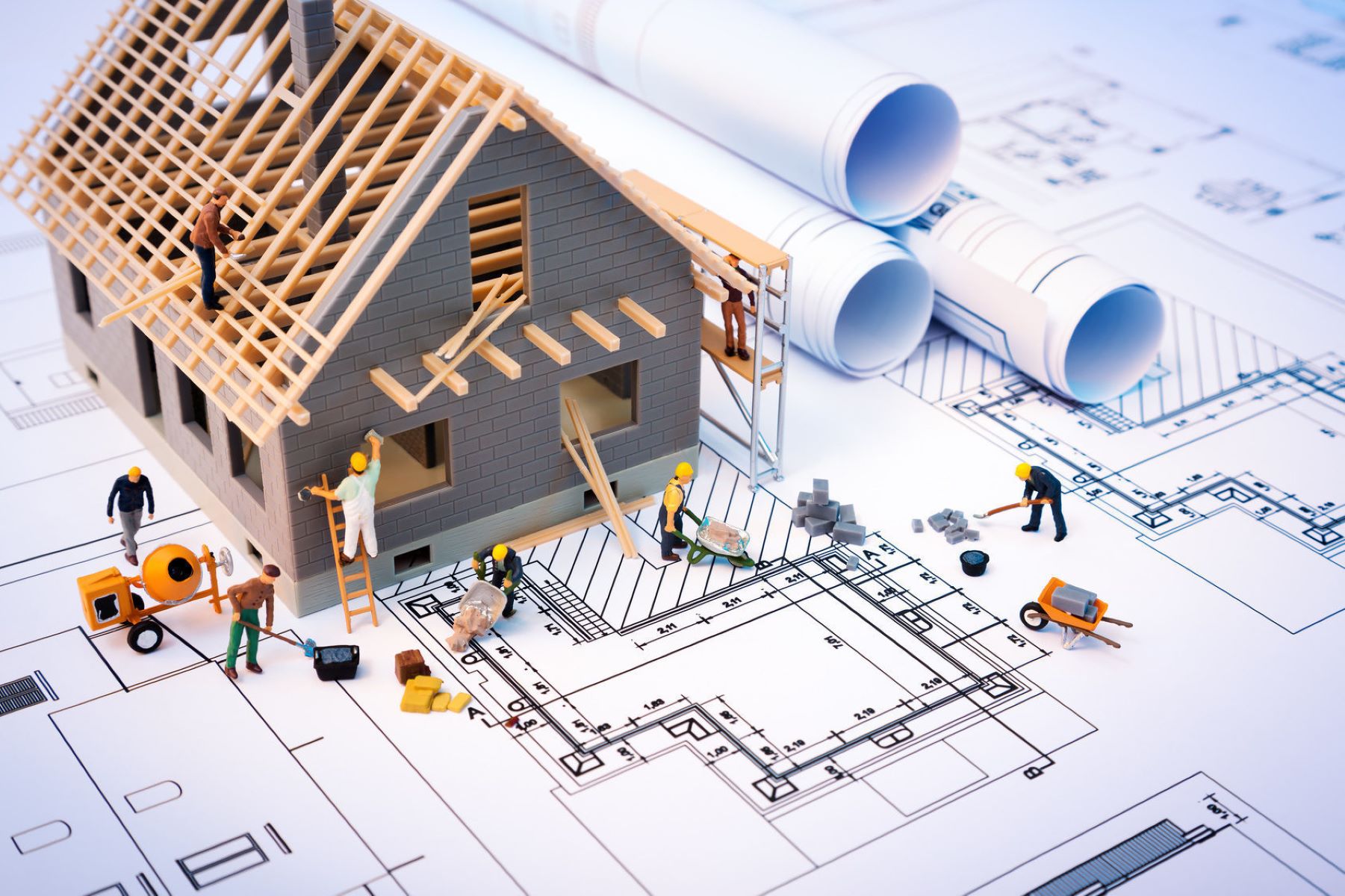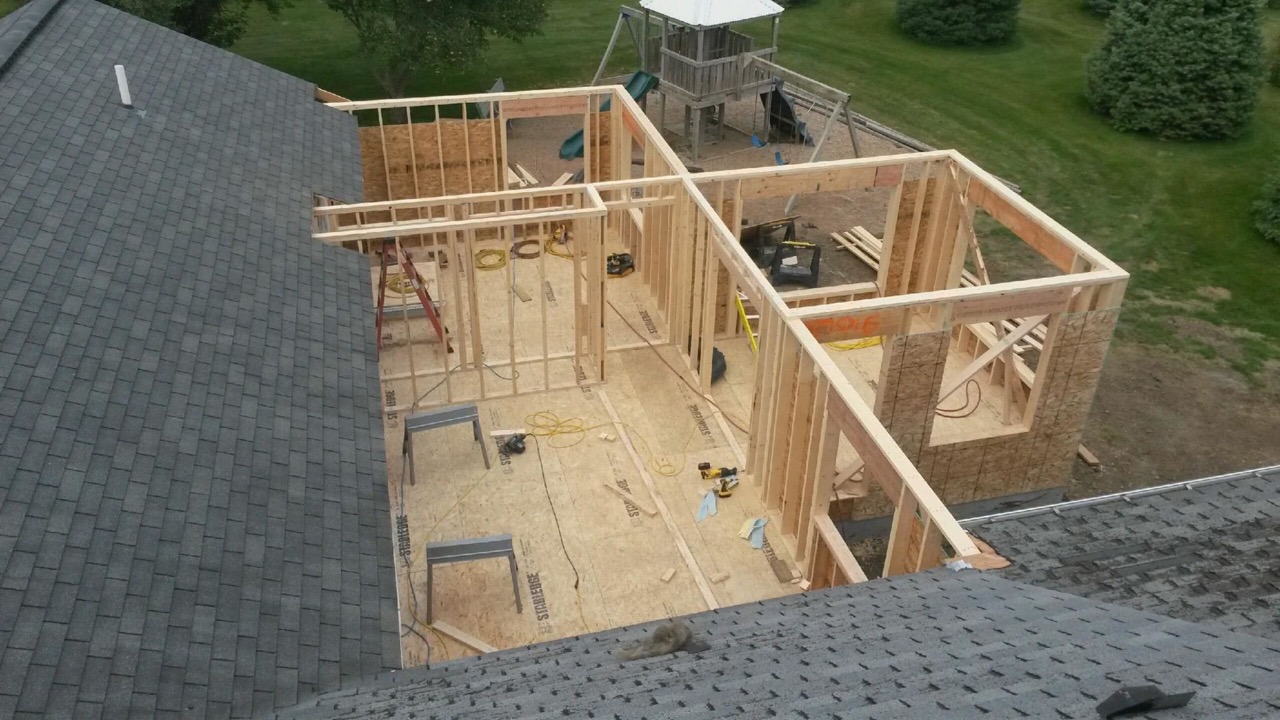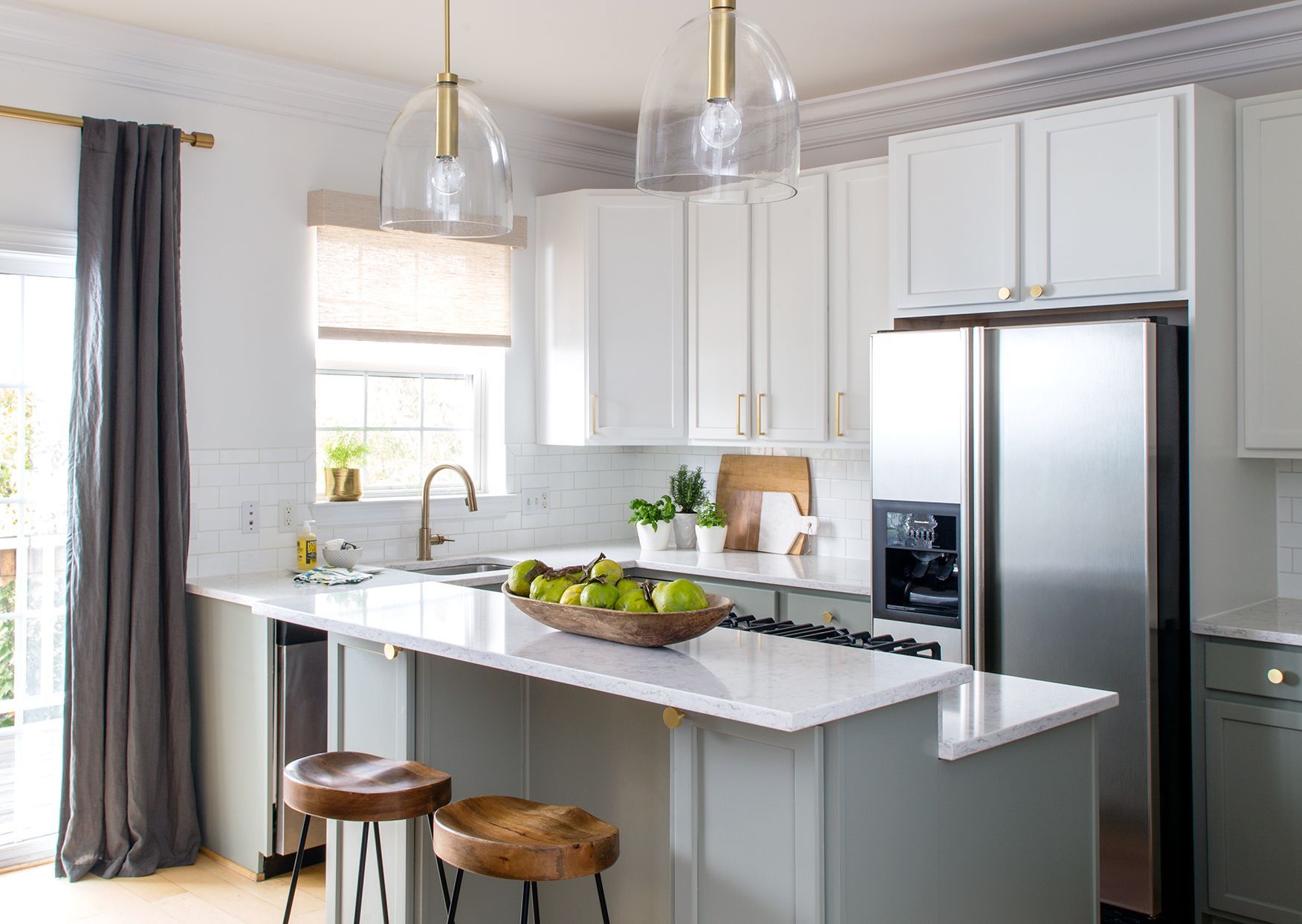

Articles
Remodeling Advice & Planning
Modified: October 21, 2024
Find expert articles and tips on remodeling advice and planning to transform your home. Gain insights and inspiration for your next remodeling project.
(Many of the links in this article redirect to a specific reviewed product. Your purchase of these products through affiliate links helps to generate commission for Storables.com, at no extra cost. Learn more)
Introduction
Welcome to our comprehensive guide on remodeling advice and planning! Whether you’re considering a small renovation or embarking on a major home improvement project, this article will provide you with valuable insights to make the process smoother and more successful.
Remodeling your home can be an exciting and transformative experience. It allows you to customize your living space to better suit your needs and preferences, while also increasing the value of your property. However, undertaking a remodeling project requires careful planning, budgeting, and decision-making to ensure a successful outcome.
In this article, we will walk you through the essential steps to help you assess your needs and goals, set a budget, choose the right contractor, obtain permits and licenses, design and plan your project, select materials and finishes, consider structural changes, explore energy efficiency upgrades, manage the remodeling process, and deal with unexpected issues that may arise.
Key Takeaways:
- Planning is crucial for a successful remodeling project. Assess your needs, set a realistic budget, choose the right contractor, obtain permits, and design with purpose to achieve your vision.
- Embrace flexibility and preparedness for unexpected issues during remodeling. Implement contingency plans, communicate openly with your contractor, and stay patient to navigate challenges effectively.
Assessing Your Needs and Goals
The first step in any remodeling project is to assess your needs and goals. What areas of your home do you want to remodel? Are you looking to create more functional spaces, enhance the aesthetics, or improve the overall value of your property? Take the time to carefully evaluate each room and determine what changes would best serve your needs.
Consider factors such as the size of the space, existing layout, and your lifestyle requirements. Do you need more storage, additional bedrooms, or a home office? Are you interested in creating an open floor plan or adding a new bathroom? Understanding your remodeling needs will help you prioritize your goals and set realistic expectations for the project.
In addition, think about how long you plan to stay in your home. If you’re remodeling with the intention of selling in the near future, focus on renovations that will appeal to potential buyers and provide a good return on investment. If you plan to stay for the long term, prioritize changes that will enhance your daily living experience.
Setting a Budget
Once you have a clear understanding of your remodeling needs and goals, it’s time to set a budget. Consider your finances and determine how much you can afford to allocate to the project. Take into account not only the cost of materials and labor but also any additional expenses such as permits, design fees, and unforeseen contingencies.
Researching costs and expenses is an important part of setting a realistic budget. Obtain quotes from contractors, visit home improvement stores to get an idea of material prices, and research average costs for similar remodeling projects. Be sure to include a buffer in your budget for unexpected expenses that may arise during the construction process.
Remember that prioritizing quality and durability is crucial. While it may be tempting to opt for the cheapest materials or contractors with the lowest bids, it may end up costing you more in the long run. Invest in materials and services that will stand the test of time to ensure your remodeling project is a worthwhile investment.
Now that you have assessed your needs and set a budget, let’s move on to choosing the right contractor to bring your remodeling vision to life.
Key Takeaways:
- Planning is crucial for a successful remodeling project. Assess your needs, set a realistic budget, choose the right contractor, obtain permits, and design with purpose to achieve your vision.
- Embrace flexibility and preparedness for unexpected issues during remodeling. Implement contingency plans, communicate openly with your contractor, and stay patient to navigate challenges effectively.
Assessing Your Needs and Goals
Before diving into a remodeling project, it’s essential to assess your needs and define your goals. This process will help you prioritize your remodeling efforts and ensure that the final result aligns with your vision for your home.
Determining your remodeling needs
Start by evaluating each area of your home and identifying what aspects you would like to improve or change. Do you find that your kitchen lacks storage space? Is your bathroom outdated and in need of a modern makeover? Are there any structural issues that require attention, such as a leaking roof or a cracked foundation?
Take the time to walk through your home and note down any areas that are not meeting your expectations or causing significant inconvenience. These can range from minor cosmetic enhancements to major functional improvements.
Consider your family’s lifestyle and preferences when determining your remodeling needs. If you have children, you might want to create a designated play area or add extra bedrooms. If you enjoy entertaining guests, an open concept living space or a spacious outdoor patio might be high on your priority list.
By assessing your needs, you can create a comprehensive list of changes you would like to make, serving as a solid foundation for the remodeling project.
Defining your remodeling goals
Once you have determined your needs, it’s time to define your goals for the remodeling project. What do you hope to achieve with the renovations? Are you looking to increase the functionality and efficiency of your living spaces, improve the aesthetics, or a combination of both?
Consider the overall style and vibe you want to create in your home. Do you prefer a contemporary, minimalist design or a more traditional, cozy atmosphere? Think about the colors, materials, and finishes that resonate with your personal taste and will enhance the visual appeal of your space.
It’s also important to consider the long-term goals for your home. Are you planning to stay in the house for many years, or do you anticipate selling in the near future? This will influence the decisions you make and the investments you are willing to make in the remodeling project.
Setting clear goals will help guide you throughout the remodeling process and ensure that the end result aligns with your vision. Having a solid understanding of what you hope to achieve will also make it easier to communicate your expectations with contractors, architects, and designers.
By assessing your needs and defining your goals, you can embark on your remodeling journey with clarity and purpose. The next step is setting a budget, which we will explore in the following section.
Setting a Budget
Setting a budget is a crucial step in any remodeling project. By evaluating your finances and researching costs and expenses, you can ensure that your remodeling plans align with your financial capabilities.
Evaluating your finances
Before determining how much you can allocate to your remodeling project, it’s essential to assess your overall financial situation. Take a close look at your income, savings, and any other sources of funds that you can allocate to the project.
Consider your monthly expenses, including mortgage or rent, utilities, and other financial obligations. Understanding your financial commitments will help you determine how much you can comfortably afford to spend on your remodeling project without compromising your financial stability.
It’s crucial to strike a balance between your desired remodeling goals and what you can afford. Avoid getting into unnecessary debt or straining your finances to fund the project. Remember that a well-planned remodeling project can add value to your home, but it’s important to determine a realistic budget to avoid potential financial stress.
Researching costs and expenses
Once you have evaluated your finances, it’s time to research the costs and expenses associated with your remodeling project. Start by gathering estimates from contractors or design professionals to get a sense of the overall budget range for your project.
Keep in mind that the costs will depend on various factors, including the size and complexity of the project, the materials used, and the level of customization desired. Research the average costs for similar remodeling projects in your area to get a better understanding of what to expect.
In addition to labor and materials, there may be other expenses to consider. These can include permit fees, design fees, equipment rentals, and unforeseen contingencies. It’s essential to account for these potential additional costs when setting your budget.
It’s also worth considering the return on investment (ROI) of your remodeling project. Some renovations, such as kitchen and bathroom upgrades, tend to have higher ROI and can potentially increase the value of your home. Research which renovations yield the best returns in your local housing market to make informed decisions about where to allocate your budget.
By evaluating your finances and researching costs and expenses, you can set a realistic budget for your remodeling project. Striving for a balance between your remodeling goals and your financial capabilities will ensure a successful and stress-free experience. The next step is choosing the right contractor for your project, which we will discuss in the following section.
Choosing the Right Contractor
Choosing the right contractor is vital to the success of your remodeling project. With proper research, reference checks, and interviews, you can find a reputable contractor who will bring your vision to life and ensure the project is executed smoothly.
Researching contractors
Start by conducting thorough research on contractors in your area. Look for companies or individuals who specialize in the type of remodeling project you are undertaking. Ask friends, family, and neighbors for recommendations or search online directories for local professionals.
Visit contractor websites to get an idea of their services, expertise, and project portfolios. Look for evidence of their experience, certifications, and any awards or accolades they may have received. A well-established contractor with a proven track record is more likely to deliver quality workmanship.
Checking references and reviews
Once you have found potential contractors, it’s essential to check their references and read reviews from previous clients. Contact the contractor and request a list of references. Take the time to speak with these references and ask about their experience working with the contractor. Were they satisfied with the quality of work? Did the contractor complete the project within the agreed-upon timeline and budget?
Additionally, search for online reviews and ratings of the contractor. A reputable contractor will have positive reviews and satisfied customers. However, be cautious of relying solely on online reviews, as they can sometimes be biased or misleading. Consider the overall sentiment and look for consistent feedback regarding the contractor’s professionalism, communication, and craftsmanship.
Conducting interviews
After narrowing down your options, it’s time to conduct interviews with the contractors you are considering. Schedule in-person or virtual meetings to discuss your remodeling project in detail. During the interviews, pay attention to the contractor’s communication skills, attentiveness, and willingness to listen to your ideas and concerns.
Ask the contractors about their experience with similar projects and inquire about their process, timeline, and subcontractors. Discuss your budget and ask for an estimated cost based on your requirements. A reliable contractor will provide a detailed proposal that includes the scope of work, materials, and associated costs.
Use the interviews as an opportunity to assess the contractor’s professionalism, their ability to understand and interpret your vision, and how well you connect with them on a personal level. Remember, you will be working closely with this person or team for the duration of the project, so it’s essential to have open and clear communication.
By researching contractors, checking references and reviews, and conducting interviews, you can make an informed decision about who to hire for your remodeling project. The right contractor will bring expertise, reliability, and a commitment to quality craftsmanship, ensuring a successful remodel. Next, we will explore the importance of obtaining permits and licenses for your project.
Obtaining Permits and Licenses
Obtaining the necessary permits and licenses is a crucial step in any remodeling project. It ensures that your renovation complies with building codes and regulations, guaranteeing safety and adherence to local laws. Let’s dive into understanding building permits and the process of applying for necessary licenses.
Understanding building permits
A building permit is an official document issued by your local government or municipality that grants you permission to proceed with your remodeling project. It is required for most significant renovations, structural changes, or additions to your home.
Building permits are essential because they ensure that the construction work meets safety standards and adheres to zoning regulations. They also help protect homeowners by ensuring that the work is carried out by qualified professionals who are accountable for their actions.
The specific requirements for building permits vary depending on your location and the scope of your project. Common remodeling projects that often require permits include additions, structural modifications, electrical work, plumbing upgrades, and changes to the home’s exterior.
If you’re unsure whether your remodeling project requires a permit, it’s best to consult with your local building department. They will guide you through the process and provide you with the necessary information based on the specific details of your project.
Applying for necessary licenses
In addition to building permits, you may need to obtain certain licenses or certifications depending on the nature of your remodeling project. Some states or municipalities require contractors to hold specific licenses in order to perform certain types of work.
Research the licensing requirements in your area and ensure that any contractor or trade professional you hire has the necessary credentials. Check with your state’s licensing board or department of professional regulation to verify that the contractor has a valid license and is in good standing.
When applying for a building permit or a license, you will likely need to provide detailed information about your remodeling project. This may include architectural drawings, construction plans, material specifications, and proof of insurance coverage.
Contact your local building department or licensing agency for the specific application process and required documentation. Be sure to submit your application well in advance, as the review and approval process can take time.
Remember that obtaining permits and licenses is not only a legal requirement but also ensures that your remodeling project meets safety standards and is carried out by qualified professionals. It may seem like an additional step in the process, but it will ultimately protect your investment and ensure the integrity of your home.
With a clear understanding of building permits and the process of obtaining necessary licenses, you are ready to move forward with the design and planning stage of your remodeling project.
Design and Planning
Design and planning are essential aspects of any remodeling project. They set the foundation for a successful renovation by ensuring that your vision is translated into a well-thought-out plan. Let’s explore the key steps involved in creating a remodeling plan and the benefits of working with a designer or architect.
Creating a remodeling plan
The first step in the design and planning phase is to create a remodeling plan. This plan serves as a roadmap for your project and helps guide the decision-making process. It outlines the specific changes you want to make, the required materials, and the overall aesthetic you wish to achieve.
Start by clearly defining your remodeling goals and objectives. Consider the functionality and flow of each space, the desired style or theme, and any specific features or elements you want to incorporate. Think about how the different areas of your home will interact with each other and how you can optimize the use of space.
It’s also crucial to consider practical aspects such as your budget and the timeline for the project. Ensure that your remodeling plan aligns with your financial capabilities and that you allow for a realistic timeline to complete the renovations.
As you create your remodeling plan, gather inspiration from various sources such as magazines, websites, and social media platforms. Create a vision board or a folder of images that represent your desired aesthetic and design elements.
Working with a designer/architect
While you can certainly create a remodeling plan on your own, working with a professional designer or architect can greatly benefit your project. These professionals have expertise in spatial planning, design principles, and building codes, which can result in a more functional and aesthetically pleasing outcome.
A designer or architect will work closely with you to understand your needs, preferences, and budget. They will then use their knowledge and creativity to develop a comprehensive design that incorporates your vision while considering practical and structural aspects.
Designers and architects can also assist with creating 3D renderings or architectural drawings that allow you to visualize the final result. These drawings can help you make informed decisions about layout, finishes, and other design elements before construction begins.
Additionally, a professional designer or architect will have industry connections and can recommend reputable contractors, suppliers, and tradespeople. They can also help manage the project, ensuring that the design is executed as intended and overseeing the construction process.
Working with a designer or architect can streamline the design and planning phase of your remodeling project, saving you time, money, and potential headaches down the line. Their expertise, creativity, and attention to detail will help transform your ideas into a cohesive and well-executed design.
With a solid remodeling plan in place, the next step is to select the appropriate materials and finishes for your project. Let’s explore this in the next section.
Selecting Materials and Finishes
When it comes to remodeling, selecting the right materials and finishes is crucial to achieving your desired aesthetic and ensuring the longevity of your project. This phase requires thoughtful consideration and research to find the perfect combination of materials that align with your vision, budget, and functional requirements. Let’s explore the key steps involved in selecting materials and finishes for your remodeling project.
Researching different materials
Start your material selection process by researching different options available in the market. Visit showrooms, browse online catalogs, and consult with experts to learn about the various materials that can be used for your project: from flooring and countertops to cabinetry, fixtures, and wall finishes.
Consider the characteristics and properties of each material, such as durability, maintenance requirements, and suitability for the intended use. Think about how the material will complement the overall design aesthetic and how it will integrate with other elements in your space.
During your research, gather samples or swatches of your favorite materials to help visualize how they will look and feel in your home. Consider factors such as color, texture, and pattern to ensure that the materials you choose create the desired atmosphere.
Considering durability and budget
When selecting materials and finishes, it’s important to strike a balance between durability and budget. While some materials may be more cost-effective, they may not offer the same level of longevity as higher-quality options. Consider the lifespan of the materials and the expected wear and tear in the specific areas of your home.
Think about your lifestyle and how the materials will hold up to daily use. For example, if you have young children or pets, you may want to choose flooring materials that are scratch-resistant and easy to clean. If you’re remodeling a bathroom, opt for waterproof and moisture-resistant materials to prevent damage over time.
Take into account your budget and prioritize materials that offer the best balance between cost and quality. Remember that investing in durable materials upfront may save you money in the long run by reducing the need for frequent repairs or replacements.
It’s also worth considering eco-friendly options that promote sustainability. Look for materials that are made from recycled or renewable sources and those that have low VOC (volatile organic compound) emissions to create a healthier indoor environment.
Before finalizing your material selections, consult with your contractor, designer, or architect. They can provide valuable insights based on their experience and offer recommendations that align with your design vision, budget, and functional requirements.
By researching different materials and considering factors such as durability and budget, you can make informed decisions that result in a visually appealing and long-lasting remodeling project. The next step is to evaluate any structural changes that may be necessary for your renovation, which we will discuss in the following section.
Structural Considerations
When planning a remodeling project, it’s important to evaluate and consider any potential structural changes that may be necessary. Structural considerations involve the assessment of load-bearing walls, foundations, and other components of your home to ensure their integrity and suitability for your planned renovations. Let’s explore the key steps involved in evaluating potential structural changes and the importance of consulting with a structural engineer if needed.
Evaluating potential structural changes
As you plan your remodeling project, take the time to evaluate any potential structural changes you wish to make. This may include removing or adding walls, opening up spaces, or creating new room configurations. It’s important to determine whether these changes are feasible and if they will require any modifications to the existing structural elements of your home.
Identify load-bearing walls, which are responsible for supporting the weight of the structure above them. These walls should not be removed or altered without proper evaluation and reinforcement. Consult with a professional, such as a structural engineer, to assess the impact of any proposed changes and ensure that they do not compromise the structural integrity of your home.
Evaluating potential structural changes early in the planning stage allows you to make informed decisions and avoid costly mistakes or safety hazards down the line.
Consulting with a structural engineer if needed
If you are considering significant structural changes, it is highly recommended to consult with a structural engineer. A structural engineer is a professional who specializes in analyzing and designing the structural components of buildings.
A structural engineer will assess the feasibility of your proposed changes, analyze the existing structural elements, and provide recommendations to ensure the safe implementation of your remodeling project. They can determine if additional supports, reinforcements, or modifications are necessary to maintain the structural integrity of your home.
Working with a structural engineer provides peace of mind, as they have the expertise and knowledge to assess the load-bearing capacity of your home and ensure that your renovations are carried out safely. They can also provide guidance on building codes and regulations that need to be followed during the construction process.
Consulting with a structural engineer is particularly important when undertaking extensive renovations or making changes to load-bearing walls or foundational elements. Their professional expertise ensures that your remodeling project is structurally sound and complies with safety standards.
By evaluating potential structural changes and consulting with a structural engineer if needed, you can proceed with your remodeling project confidently, knowing that the structural integrity of your home is being carefully considered and addressed. Next, let’s explore the importance of energy efficiency upgrades in your remodeling plans.
Energy Efficiency Upgrades
When planning a remodeling project, it’s important to consider energy efficiency upgrades. Not only do these upgrades help reduce your environmental footprint, but they can also lead to significant cost savings on your energy bills. In this section, we’ll explore various options for energy efficiency upgrades and the benefits of considering renewable energy sources.
Exploring energy-saving options
There are several energy-saving options to consider when remodeling your home. By incorporating these into your project, you can improve the energy efficiency and sustainability of your living space.
One of the first areas to explore is insulation. Adequate insulation in walls, floors, and roofs helps regulate indoor temperatures, reducing the reliance on heating and cooling systems. Consider upgrading insulation materials to improve energy efficiency and reduce heat transfer.
Another important aspect is windows and doors. Energy-efficient windows and well-sealed doors prevent air leaks and minimize heat transfer. Look for windows and doors that have a high energy efficiency rating, such as those with double or triple glazing and low-e coatings.
Efficient heating, ventilation, and air conditioning (HVAC) systems are also essential for energy efficiency. Consider upgrading to energy-efficient models or installing programmable thermostats to optimize energy usage and reduce wasted energy.
Lighting is another area where energy savings can be achieved. Replace traditional incandescent bulbs with energy-efficient LED or CFL bulbs. These bulbs consume less electricity and have a longer lifespan.
Considering renewable energy sources
In addition to energy-saving measures, it’s worth considering renewable energy sources to power your home. Renewable energy can significantly reduce your reliance on fossil fuels and lower your carbon footprint.
Solar energy is one of the most popular and accessible renewable energy options. Installing solar panels on your roof can generate clean electricity for your home. This energy can be used to power appliances, lighting, and even charge electric vehicles. With advancements in technology, solar panels have become more affordable and efficient, making them a viable option for many homeowners.
Another renewable energy option to consider is geothermal heating and cooling. Geothermal systems utilize the stable temperature of the ground to provide efficient heating and cooling throughout the year. While the upfront cost may be higher, geothermal systems offer long-term energy savings and environmental benefits.
When considering renewable energy sources, evaluate the feasibility and cost-effectiveness for your location. Consult with renewable energy experts or contractors who specialize in these systems. They can assess your property’s suitability and provide recommendations tailored to your needs.
By exploring energy-saving options and considering renewable energy sources, you can make your remodeling project more sustainable and cost-effective in the long run. Not only will you reduce your environmental impact, but you may also qualify for incentives or tax credits that promote energy efficiency. With energy efficiency upgrades in place, you can now focus on managing the remodeling process effectively.
Managing the Remodeling Process
Managing the remodeling process effectively is key to ensuring a smooth and successful project. From creating a timeline to maintaining open communication with your contractor, these management strategies will help you stay on track and achieve your remodeling goals.
Creating a timeline
One of the first steps in managing your remodeling project is creating a realistic timeline. Work with your contractor to establish a timeline that includes major milestones, such as demolition, construction, installations, and finishing touches.
Consider factors such as lead times for ordering materials, any necessary permits or inspections, and the availability of contractors and subcontractors. Allow some flexibility in the timeline to account for potential delays or unexpected issues that may arise during the renovation process.
A detailed timeline will help you stay organized and keep track of progress. Regularly review the timeline with your contractor to ensure that everyone is on the same page and working towards meeting the established deadlines.
Communicating with the contractor
Effective communication with your contractor is essential for the success of your remodeling project. Regular and open dialogue will help ensure that your expectations are met, and any concerns or issues are addressed promptly.
Establish a clear line of communication with your contractor from the beginning. Determine how you will communicate, whether it’s through regular in-person meetings, phone calls, emails, or project management software.
During the remodeling process, maintain frequent communication with your contractor to discuss progress, make any necessary adjustments, and address any issues that may arise. Be proactive in raising any concerns and provide timely feedback to keep the project on track.
It is also important to foster a positive working relationship with your contractor. Treat them with respect and be receptive to their suggestions and professional advice. A good working relationship based on trust and mutual respect will contribute to a smoother remodeling process.
Remember to be realistic and understand that unexpected challenges may arise during the course of the remodeling project. Maintain open lines of communication with your contractor to discuss any necessary changes or modifications to the original plan.
By creating a timeline and maintaining open communication with your contractor, you can effectively manage the remodeling process and ensure a successful outcome. With the remodeling process underway, it’s important to be prepared for any unexpected issues that may arise.
Dealing with Unexpected Issues
During a remodeling project, it’s important to be prepared for unexpected issues that may arise. From unforeseen structural problems to material delays, handling these setbacks effectively can help keep your project on track and minimize stress. Let’s explore some strategies for dealing with unexpected issues and implementing contingency plans.
Preparing for potential setbacks
One of the best ways to deal with unexpected issues is to be prepared for them. Understand that remodeling projects often involve working on existing structures, and there may be hidden problems that only become apparent during the construction phase.
Have realistic expectations and budget in extra time and resources to account for potential setbacks. Building a buffer into your timeline and budget allows you to proactively address any unexpected issues without causing significant disruptions or compromising the quality of the work.
Working with a reputable contractor who has experience dealing with unforeseen challenges is also crucial. Their expertise and problem-solving skills will be invaluable in navigating unexpected issues and finding appropriate solutions.
Implementing contingency plans
When an unexpected issue arises, it’s important to have a contingency plan in place. Evaluate the situation and work with your contractor to develop alternative solutions that will keep your project moving forward.
For example, if a certain material is delayed or unavailable, consider whether there are suitable alternatives that can be used instead. If a structural issue arises, consult with a structural engineer to determine the best course of action to address the problem while ensuring the safety and stability of your home.
Your contingency plan may involve adjusting the timeline, revising the design, or even reevaluating your budget. Being flexible and open to adjustments will help ensure that unexpected setbacks do not derail your entire project.
Clear communication with your contractor is key when implementing contingency plans. Keep them informed about any issues and work together to find the best solutions. Regularly review and update your project plan to reflect any changes or adjustments that need to be made.
Remember to stay patient and flexible during the remodeling process. While unexpected issues can be frustrating, maintaining a positive and proactive mindset will help you navigate through these challenges more smoothly.
By preparing for potential setbacks and implementing effective contingency plans, you can better manage unexpected issues and ensure the successful completion of your remodeling project. As you near the end of your project, it’s important to reflect on the progress and achievements made along the way.
Conclusion
Congratulations! You’ve reached the end of our comprehensive guide on remodeling advice and planning. We have covered a wide range of topics to help you navigate through the various stages of your remodeling project. By following these guidelines, you can make informed decisions, stay organized, and achieve a successful outcome.
Assessing your needs and goals is the first step in any remodeling project. By understanding what you want to achieve and prioritizing your objectives, you can create a clear vision for your renovation.
Setting a budget is crucial to ensure that your remodeling plans align with your financial capabilities. Conducting thorough research on costs and expenses, and considering quality and durability, will help you make realistic budgetary decisions.
Choosing the right contractor is imperative for a successful project. Researching contractors, checking references and reviews, and conducting interviews will enable you to find a reliable professional who understands your vision and can bring it to life.
Obtaining the necessary permits and licenses ensures that your remodeling project complies with local regulations and safety standards. Understanding building permits and obtaining necessary licenses will give you peace of mind throughout the process.
Design and planning play a crucial role in achieving your remodeling goals. Creating a remodeling plan and working with a designer or architect can help you visualize the end result and ensure a cohesive design.
Selecting the right materials and finishes is essential for both aesthetics and functionality. Researching different materials, considering durability and budget, and making sustainable choices can have a significant impact on the outcome of your project.
Evaluating potential structural changes and consulting with a structural engineer, if necessary, allows you to ensure the structural integrity of your home and avoid any unforeseen issues during construction.
Energy efficiency upgrades can make your home more sustainable while reducing your energy costs. Exploring energy-saving options and considering renewable energy sources are key steps in creating an eco-friendly living environment.
Managing the remodeling process involves creating a timeline and maintaining open communication with your contractor. By staying organized and proactive, you can keep your project on track and address any challenges that may arise along the way.
Dealing with unexpected issues is part of the remodeling process. By preparing for potential setbacks and implementing contingency plans, you can minimize disruptions and ensure the project moves forward.
As you near the completion of your remodeling project, take a moment to reflect on the progress you’ve made and the transformation you’ve achieved. Celebrate your achievements and enjoy your newly remodeled home.
Thank you for joining us on this remodeling journey. We hope that this guide has provided you with valuable insights and inspiration for your remodeling project. Remember, meticulous planning, informed decision-making, and effective communication will contribute to the success of your renovations. Best of luck in creating the home of your dreams!
Frequently Asked Questions about Remodeling Advice & Planning
Was this page helpful?
At Storables.com, we guarantee accurate and reliable information. Our content, validated by Expert Board Contributors, is crafted following stringent Editorial Policies. We're committed to providing you with well-researched, expert-backed insights for all your informational needs.








0 thoughts on “Remodeling Advice & Planning”